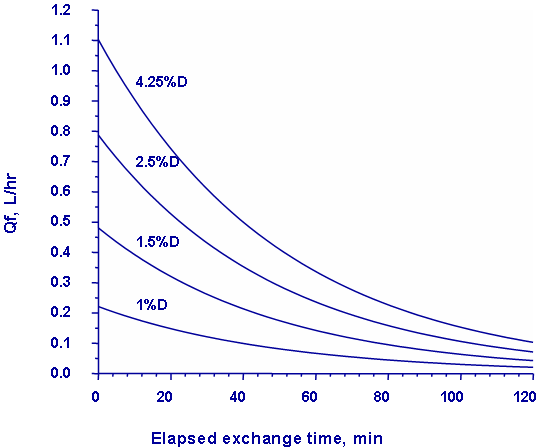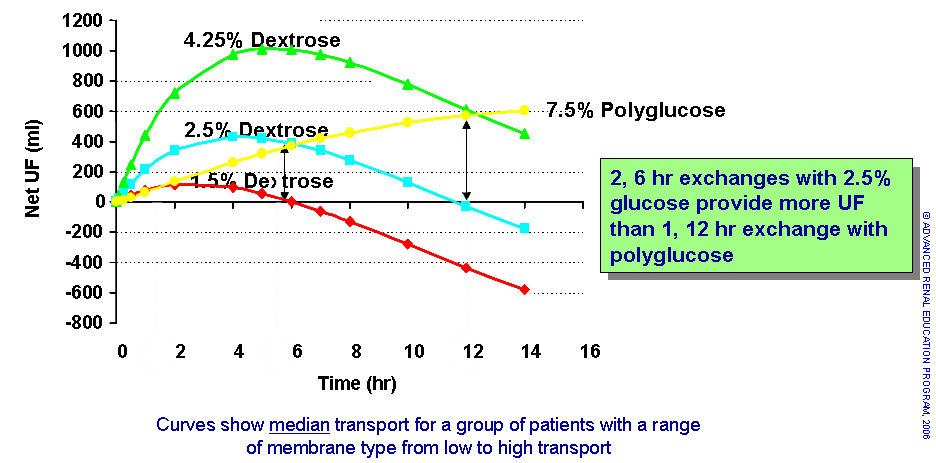How to Achieve Adequate PD UF
The most effective ways of increasing ultrafiltration (UF) are increasing the concentration of glucose in the dialysis solution and providing shorter and more frequent exchanges. The latter is most effective among patients with high peritoneal transport since a short exchange can occur while the osmotic gradient is still considerably high
UF rate vs time for various dextrose concentrations
With automated peritoneal dialysis (APD) it is relatively easy to increase ultrafiltration by simply prescribing shorter and more exchanges during the night without taxing patient’s time. However, high transporters do not experience enough UF during the long diurnal exchanges of CCPD. This creates a problem since we should avoid the excessive use of highly hypertonic solutions (4.25% dextrose) due to the increased caloric load and potentially deleterious effects on the peritoneal membrane. The ways of maintaining UF during the diurnal phase of APD are by either shortening the dwell time by adding an additional diurnal exchange (see Peritoneal Dialysis (PD) Modalities section of the Peritoneal Dialysis article for more) or with the use of polyglucose-containing solutions. The application of two shorter exchanges using glucose can provide the same or higher ultrafiltration as polyglucose, makes it possible to avoid 4.25% dextrose concentrations in most cases and avoids the adverse effects associated with polyglucose.


